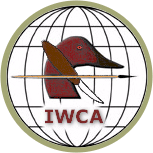Drawing Feather Groups with Tommy Rogers
Article by Bill Einsig
In this response to a Web site user's question, Tommy Rogers describes his method of drawing feathers in life-like groups.
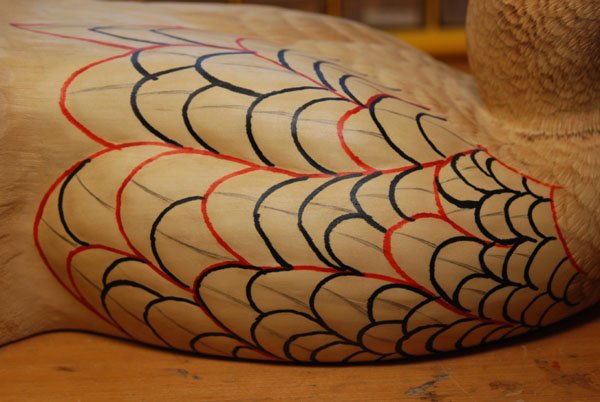
|
An IWCA Web site user wrote to ask exactly how feathers are applied once a carving is ready for painting. We asked Tommy Rogers for his advice, and realized there was a bit of confusion. We didn't know if the carver was asking about the feather groups over large body regions, or the small, variable feather groups within those regions. However, Tommy gave us this short demo on how he applies feather groups to his carvings for a natural, life-like look.
|
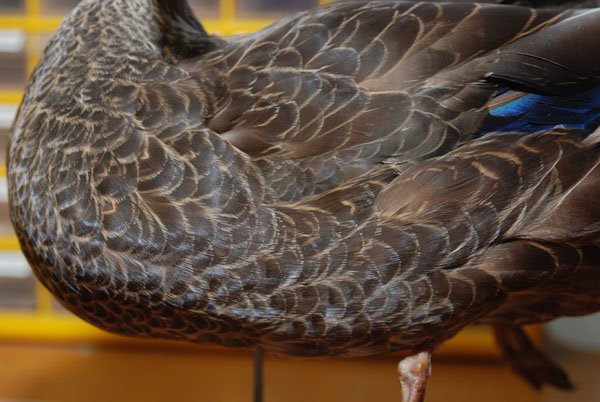 |
|
1. One of the pitfalls of beginning bird carvers is to draw feathers with the regularity and symmetry of fish scales. A close look at the live bird, or, in this case, a taxidermy mount, shows that feathers are arranged in smaller subgroups consisting of few feathers—often just five or six feathers per group. When you examine the arrangement of coverts to the left of the speculum in this photo, can you see small feather groupings? These groups merge, overlap, and interlace with neighboring groups.
|
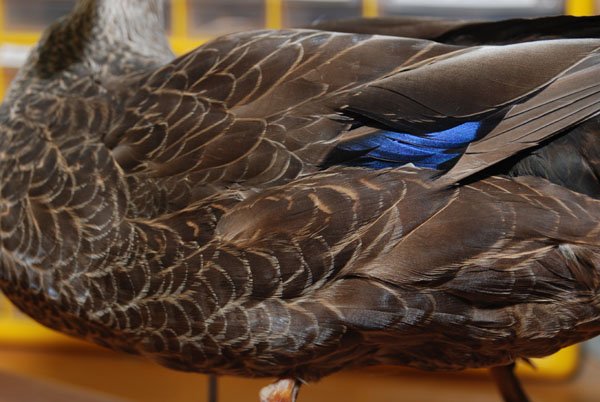 |
|
2. Look at the side pocket to the lower left of the blue speculum. Feathers are arranged into linear series of five or six feathers, and each series blends, or partially overlaps, a neighboring group.
|
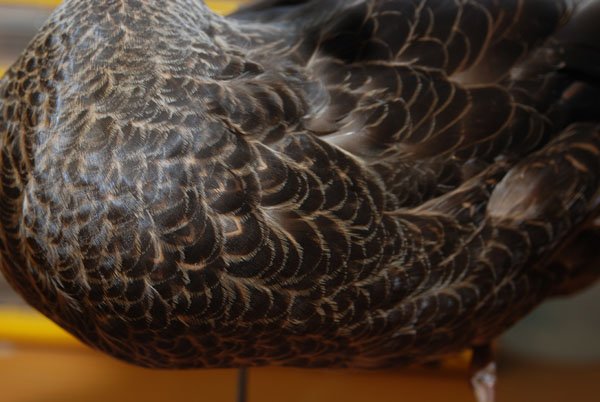 |
|
3. In this view of the side of the breast and anterior side pocket, feathers are, again, easy to recognize as small groups with relatively few feathers.
|
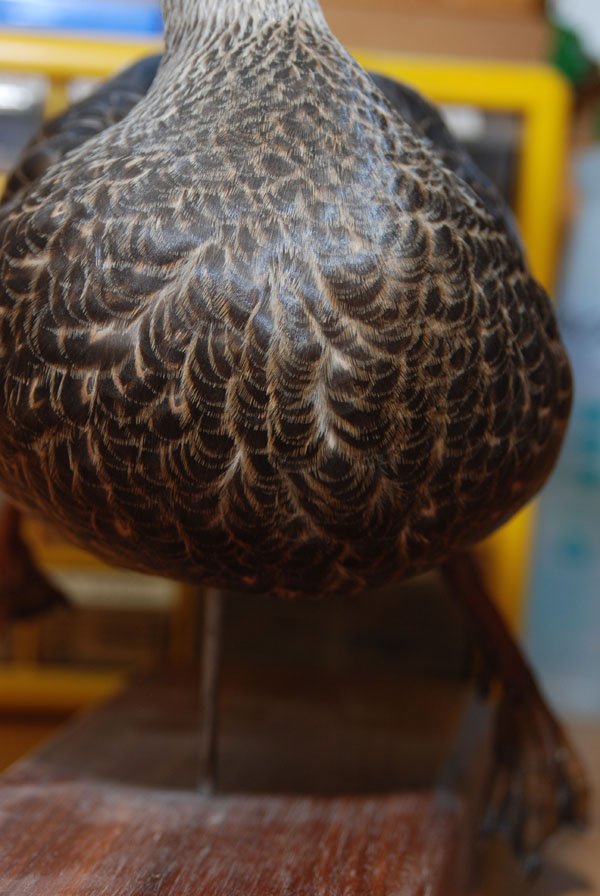 |
|
4. Even on the breast, feathers fall into long, linear, sometimes bending, columns of overlapping feathers, but each column varies slightly in feather size and orientation throughout its length. Look closely, and you'll still find small groupings of four to six feathers in each subgroup.
|
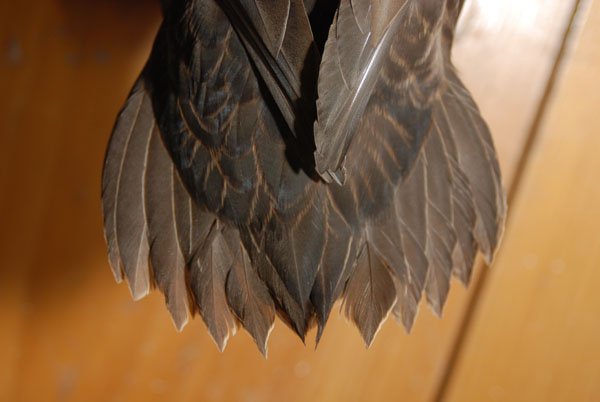 |
|
5. You might look at this simple image and see portions of three feather groups: tips of the primaries, the middle layer consisting of slightly darker uppertail coverts, and the tail feathers themselves.
But feathers within these major groups are arranged in smaller subgroups with fewer feathers. For example, look closely at the coverts. There is a cluster of five coverts just to the right of the primaries. Notice how different they are to the grouping of longer coverts that extend out over the center of the tail. The coverts on the left are also arranged in smaller subgroups but are not identical to those on the right. Obviously, capturing this arrangement of small subgroups is an important factor in obtaining the lifelike, natural look to your carving.
|
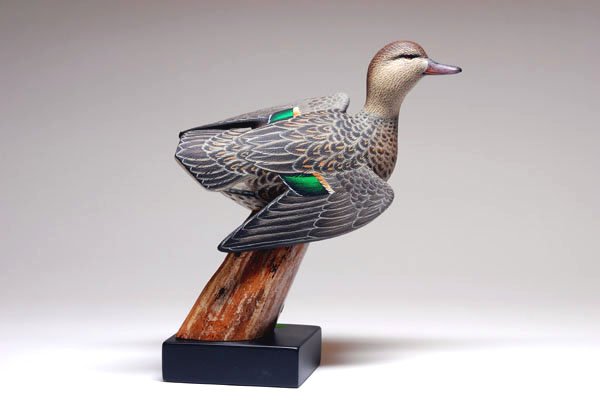 |
|
6. Tommy Rogers uses a demo bird to help his students understand feather groups. Feathers in this side pocket are not drawn randomly throughout the area, and they are not drawn with boring regularity. Here, the side pocket is outlined in red, and within that area, smaller feather groups are also in red. Individual feathers, in black, fill out each small group with relatively few feathers just as we saw on the taxidermy mount.
|
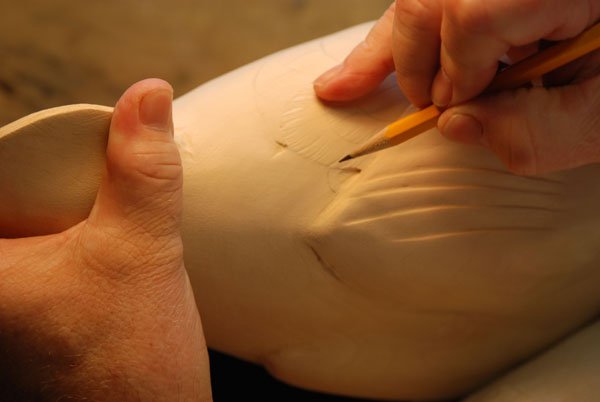 |
|
7. Rogers adds a small group of coverts by drawing in the first feather in a small group.
|
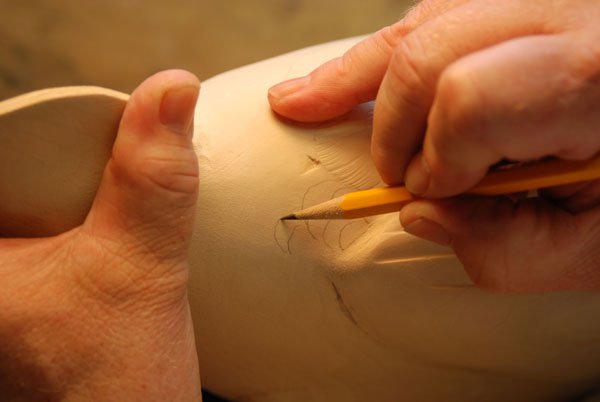 |
|
8. Having finished the first group of six feathers, Rogers draws another group to the left of the first. Rogers isn't following a pattern. Instead, he's drawing clusters of feathers similar to what he has observed in viewing the live bird, taxidermy mounts, and reference photos. Research, research, research.
|
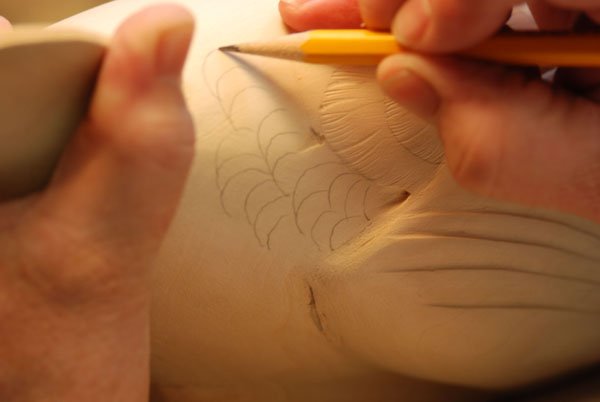 |
|
9. Here, you can see what could be five feather groups. First, there is a group of seven drawn in the lower right-hand corner. Above that is a group of three with a companion group to its left and another group below in the lower left. Finally, Rogers completes a group of three at the top.
Again, Rogers is not following a pattern. He's laying down small groups of feathers resembling the natural flow he has seen in live birds, taxidermy mounts, and reference photos. By capturing the arrangement of individual feathers in small groups, he has helped his carving achieve the realistic, natural appearance of the live bird. That's what judges and collectors look for.
|
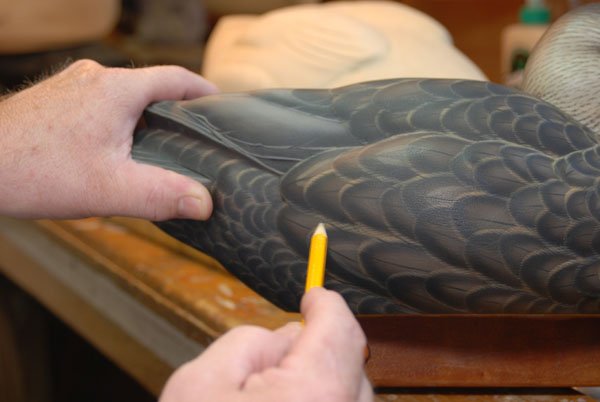 |
|
10. Can you identify small groupings of individual feathers in the photos below? Rogers uses a pencil to outline small feather groups.
|
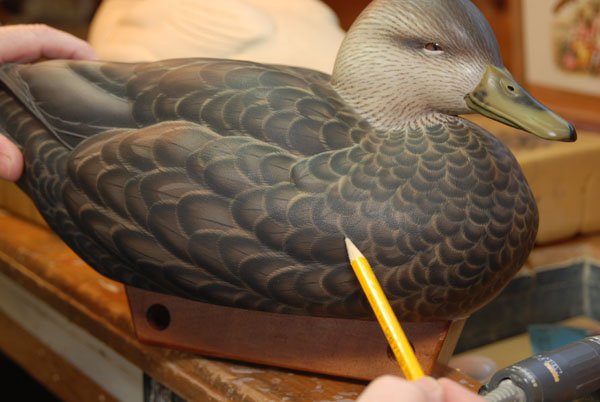 |
|
|
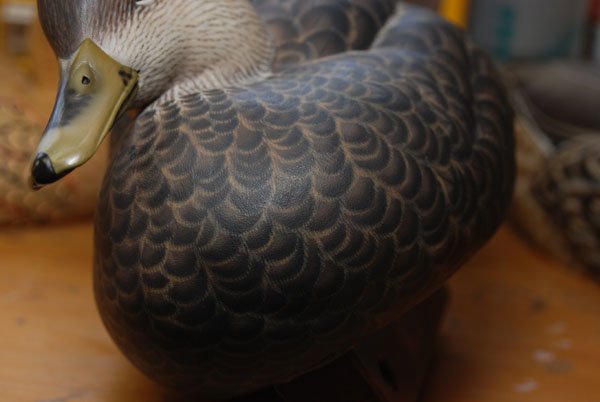 |
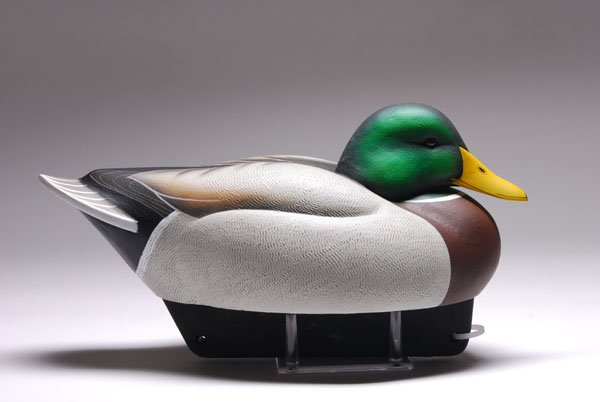 |
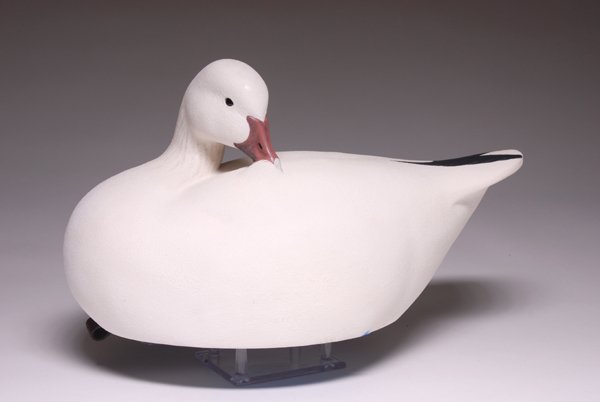 |
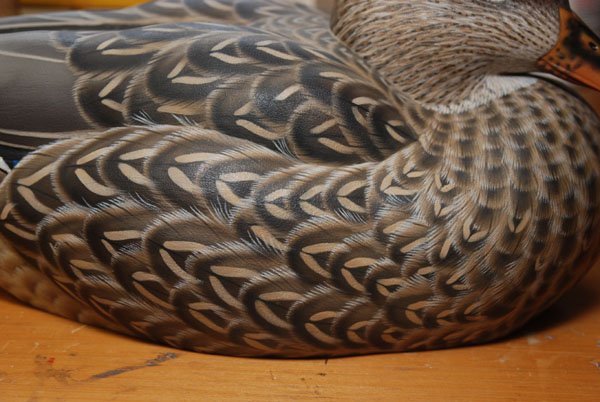 |
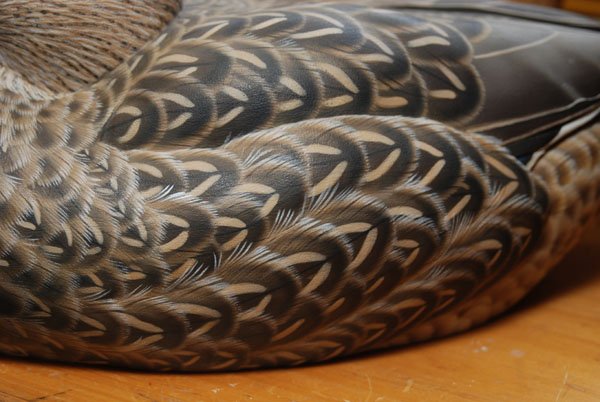 |
|
Remember, NO FISH SCALES! |
